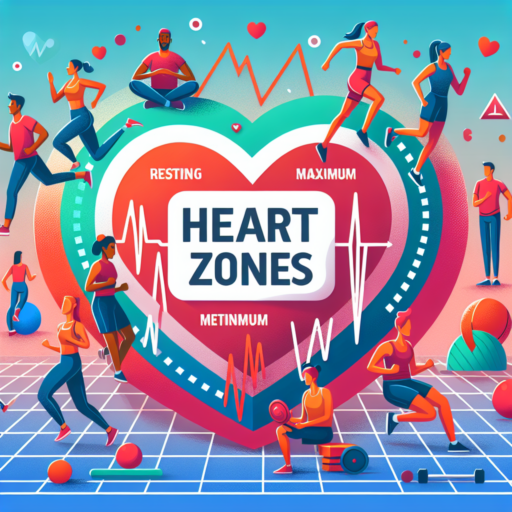What is the healthy heart rate zone for your age?
Understanding the healthy heart rate zone for your age is crucial for optimizing cardiovascular fitness and overall health. Heart rate zones indicate the intensity at which your heart should be beating during physical activity, helping you maximize the benefits of your workouts without overexerting yourself. As we age, our bodies respond differently to exercise, making it essential to adjust our physical activities according to our heart rate zones.
Why Knowing Your Heart Rate Zone Is Important
Knowing your heart rate zone can be a great asset in managing exercise intensity. It allows for tailored workout sessions that are neither too easy nor too strenuous, promoting efficient heart conditioning and endurance building. Moreover, staying within your recommended heart rate zone reduces the risk of undue stress on your cardiovascular system, which is paramount as you navigate through different age brackets.
Calculating Your Heart Rate Zone
To determine your healthy heart rate zone, first, you need to calculate your maximum heart rate (MHR). A widely accepted formula for this is 220 minus your age. For instance, if you are 30 years old, your MHR would be approximately 190 beats per minute (bpm). Typically, a healthy heart rate zone is considered to be 50% to 85% of your MHR. Therefore, a 30-year-old would have a healthy heart rate zone of about 95 to 161 bpm. However, it’s important to consult with a healthcare provider before embarking on any new exercise regimen, especially if you have any underlying health conditions.
What is a good pulse rate by age?
Understanding what is a good pulse rate by age is crucial for monitoring overall health and fitness levels. A healthy pulse rate varies significantly across different age groups, reflecting the heart’s efficiency and cardiovascular health. This measurement, also known as heart rate, offers insight into the heart’s workload and how effectively it pumps blood throughout the body.
For infants and young children, a faster pulse rate is typical due to their smaller heart sizes and higher metabolic rates. As individuals age, a gradual decrease in heart rate is observed, corresponding to changes in heart size, health, and physical fitness levels. It’s important to recognize that what’s considered a ‘good’ pulse rate can be influenced by various factors, including activity level, emotional state, and overall health.
Age-Specific Pulse Rate Guidelines
- Infants (0-1 year): 100 to 160 beats per minute
- Toddlers (1-2 years): 90 to 150 beats per minute
- Children (3-10 years): 70 to 130 beats per minute
- Adolescents (11-17 years): 60 to 100 beats per minute
- Adults (18+ years): 60 to 100 beats per minute
While these ranges offer a general guideline, it’s essential to consider individual differences. Factors such as fitness level, medications, and health conditions can influence one’s ideal pulse rate. Regular monitoring and consultation with healthcare professionals can provide personalized advice tailored to an individual’s specific health profile.
What heart rate zone should I be in?
Understanding your ideal heart rate zone is crucial for maximizing workout benefits while minimizing the risk of injury. Your heart rate zone indicates the level of intensity at which you’re exercising. The optimal zone depends on your fitness goals, whether it’s burning fat, improving cardiovascular health, or enhancing athletic performance.
Finding Your Heart Rate Zones
To determine the best heart rate zone for you, first calculate your maximum heart rate by subtracting your age from 220. For example, a 30-year-old would have a maximum heart rate of 190 beats per minute (bpm). From here, you can identify specific zones: the fat-burning zone typically ranges from 50-70% of your maximum heart rate, while the cardio zone often sits between 70-85% of your max HR.
Zone-Specific Benefits
Each heart rate zone serves a distinct purpose. Staying within the fat-burning zone is ideal for those looking to lose weight efficiently, as it primarily utilizes fat for energy. Meanwhile, the cardio zone is more intensive, improving your lung, heart, and circulatory system health. Training in this zone also increases your overall endurance. By understanding and applying these distinctions, you can tailor your workout plan to better align with your fitness objectives.
What is a good running heart rate by age?
Understanding your heart rate while running is crucial in gauging your fitness level and ensuring you’re exercising within a healthy range. A «good» running heart rate varies significantly by age, as heart rate decreases with age. This adjustment is essential to optimize performance, avoid overtraining, and minimize health risks.
General guidelines for a good running heart rate
A common method to estimate your maximum heart rate is to subtract your age from 220. For a more specific running heart rate, fitness experts recommend training at 50-85% of your maximum heart rate. Therefore, a 20-year-old runner might aim for a heart rate of 100 to 170 beats per minute while running, whereas a 50-year-old might aim for a range of 85 to 145 beats per minute.
Age-specific heart rate zones
- 20-30 years old: 100-170 bpm
- 30-40 years old: 95-162 bpm
- 40-50 years old: 90-153 bpm
- 50-60 years old: 85-145 bpm
- Over 60 years old: 80-136 bpm
It’s essential to note that these figures are averages and can vary based on individual fitness levels, health conditions, and running conditions. Integrating heart rate monitors and seeking professional guidance can personalize target heart rate zones, ensuring safe and effective running practices tailored to your age and fitness profile.









